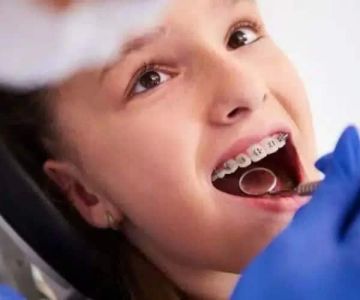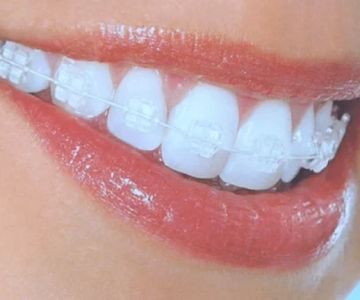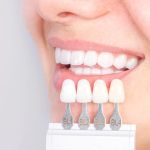Understanding Common Occlusion Problems: Overbite, Underbite, Open Bite, and Crossbite
Dental health is a multifaceted subject encompassing numerous aspects, one of which is occlusion, or the alignment of the teeth. Misalignment, also known as malocclusion, is a common issue affecting many individuals in the United States. According to the American Association of Orthodontists, nearly one-third of the population experience varying degrees of malocclusion. This article aims to educate readers about the most common occlusion problems, including overbite, underbite, open bite, and crossbite, providing insights into their causes, implications, and potential solutions.
Understanding Overbite: The Subtle Discrepancy
An overbite, sometimes referred to as a deep bite, occurs when the upper front teeth significantly overlap the lower front teeth. This condition is prevalent, with studies estimating that around 22% of people in the U.S. have some form of overbite. The overlap can result from genetic factors, prolonged thumb sucking, or excessive use of pacifiers during childhood. An untreated overbite may lead to problems such as jaw pain, gum damage, and even speech difficulties. Modern orthodontics offers several solutions, ranging from braces to surgery, depending on the severity of the case.
Exploring Underbite: The Functional Challenge
In contrast to an overbite, an underbite is characterized by the lower teeth extending forward beyond the upper teeth. This condition, while less common, tends to be more noticeable and is often attributed to jaw misalignment stemming from hereditary factors or childhood habits. Approximately 5-10% of Americans have an underbite. If left uncorrected, it can lead to issues such as difficulty in chewing, speech impediments, and accelerated tooth wear. Solutions typically involve orthodontic interventions, such as braces or aligners, with severe cases potentially requiring surgical correction.
Identifying Open Bite: The Vertical Gap
An open bite is a less common but significant occlusion issue where the front teeth do not touch when the mouth is closed, creating a vertical gap. It can occur in both anterior and posterior teeth and is often associated with habits such as thumb sucking or tongue thrusting. Open bites can complicate proper chewing and lead to speech development problems. Treatments primarily focus on behavior modification and orthodontics. In adults, the approach may also involve surgical correction to achieve desired alignment.
Grasping Crossbite: The Misaligned Meeting
A crossbite entails the upper teeth biting on the inside of the lower teeth, which can occur in the front or back of the mouth. Affecting around 1-16% of the population, crossbites often result from delayed loss of baby teeth, abnormally erupted permanent teeth, or genetic factors. If persistent, crossbites can lead to issues like asymmetric jaw growth and increased risk of tooth decay and gum disease. Treatment strategies include jaw expansion techniques and the use of braces or aligners, aimed at correcting the bite and preventing further complications.
Conclusion: Addressing Occlusion Problems for Optimal Oral Health
Recognizing and addressing occlusion problems such as overbite, underbite, open bite, and crossbite is crucial for maintaining optimal dental health. These conditions, if left untreated, can lead to significant oral and even systemic health issues. It's vital to consult with dental professionals, such as those at Dentistry Toothtruth, for diagnosis and to explore the wide range of treatment options available. Early intervention and personalized treatment plans can effectively address these issues, ensuring a healthier, more functional, and aesthetically pleasing smile. We encourage readers to seek a professional orthodontic evaluation if they suspect any alignment issues.




 T. R. Smiles Dental
T. R. Smiles Dental Elmwood Family Dental
Elmwood Family Dental Aspen Dental - Springfield, MO
Aspen Dental - Springfield, MO West Dundee Dental
West Dundee Dental Holistic Dental Wellness Center - Iman Abdeshahian, DMD
Holistic Dental Wellness Center - Iman Abdeshahian, DMD Alameda Crossing Dental Group and Orthodontics
Alameda Crossing Dental Group and Orthodontics The Importance of Oral Health Education During Pregnancy for a Healthy Pregnancy
The Importance of Oral Health Education During Pregnancy for a Healthy Pregnancy Why Skipping Dental Checkups Can Lead to Bigger Oral Health Problems
Why Skipping Dental Checkups Can Lead to Bigger Oral Health Problems Advantages of Porcelain Dental Restorations
Advantages of Porcelain Dental Restorations Best Tips for Brushing Your Teeth Properly for Healthy Gums: Essential Techniques for Oral Health
Best Tips for Brushing Your Teeth Properly for Healthy Gums: Essential Techniques for Oral Health How Can Diabetes Cause Tooth and Gum Problems? Preventing and Managing Oral Health Issues
How Can Diabetes Cause Tooth and Gum Problems? Preventing and Managing Oral Health Issues Healthy Habits for Promoting Good Oral Health and Hygiene: Tips for a Healthy Smile
Healthy Habits for Promoting Good Oral Health and Hygiene: Tips for a Healthy Smile